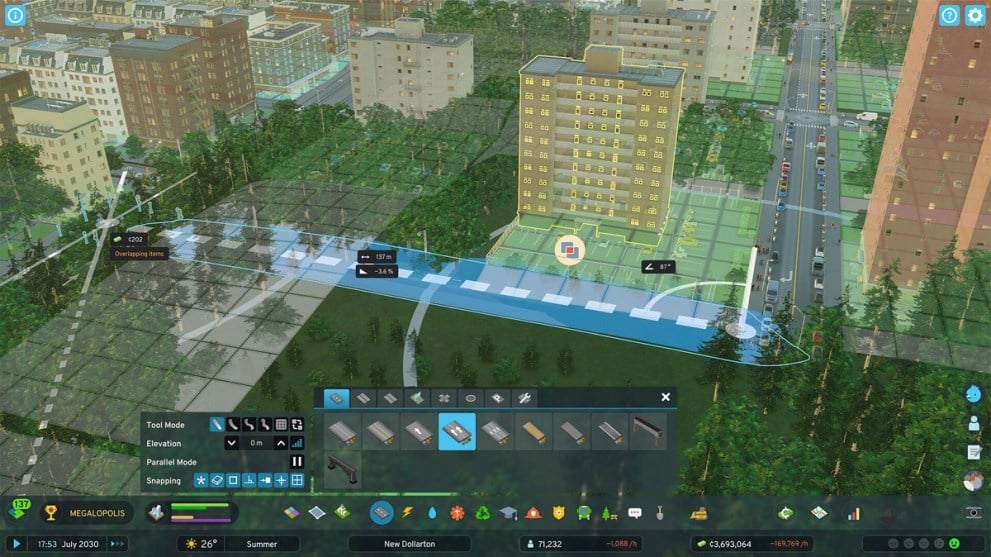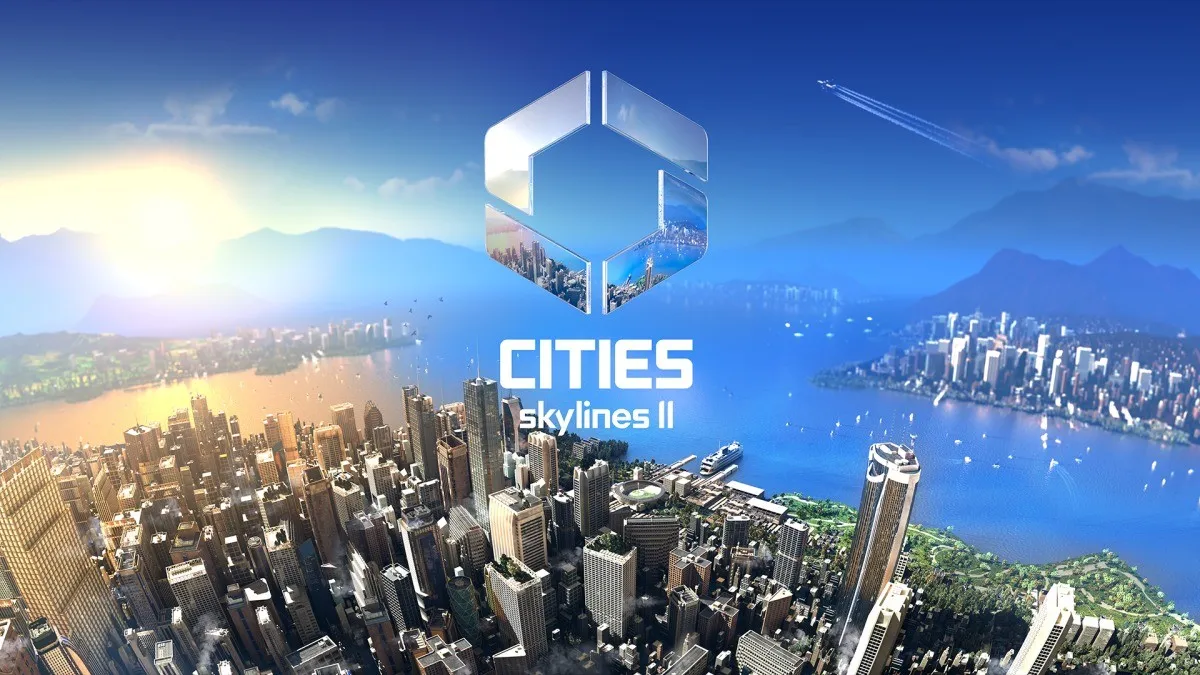Cities: Skylines 2 on PC
It is not often the idea of better roads and traffic is a feature that is highly anticipated, but that is exactly what I was looking forward to with Colossal Order and Paradox Interactive’s Cities: Skylines 2. A more organic way of laying out a city comes with easier road placement, and the improved way in which traffic is simulated was a welcomed sight. Unfortunately, even the best layouts can suffer from jams and backed-up traffic, a reflection of how this sequel delivers smooth-flowing enjoyment and frustrating times in equal measure.
Considering it’s been eight years since the first game, the expectation for Cities: Skylines 2 was to arrive with groundbreaking innovations and ideas that will build on the strong foundations established with years of support and community mods. In a sense, it does, with plenty of new mechanics that bring a sense of realism to the economy and how a proper urban metropolis is brought to life.

However, things can get needlessly complicated and fraught with clunkiness. Be it the experience of planning your dream city but jumping through so many hoops or just trying to get things looking the way they should in reality. At times, it’s like getting behind the wheel of a superpowered car but being trapped behind dozens and dozens of traffic lights turning red each time there’s momentum built up.
Before diving in, it is noteworthy to point out that when it comes to technical requirements, the developers have preemptively stated that optimization is still a work in progress. Depending on your rig, the game could look exceptionally beautiful or slow things down to a crawl that makes you question why it even launched in the first place. At least in my experience, my RTX 4080 and Ryzen 9 7900X3D had no issues showcasing Cities: Skylines 2 in the best light.
That won’t be the case for everyone, given how hard the game will push most CPUs and graphics cards, but is it worth the trouble? As much as I love the realistic depiction of life in the city, once your population starts to hit five figures, performance will dip at various points of the simulation. Are new commercial and residential zones being populated? There could be a second or two of stuttering as the cranes move in. Terraforming might have been easier early on, but raising hills and creating lakes can suddenly become a slow-moving affair. Those optimizations can’t come fast enough.

As for the actual city building, it is a mixed bag as well. The improved roads are a delight; the curve and parallel road options make creating unique enclaves easier than the more uniform central hubs in any of the territories. Having a distinct personality makes one creation different from the next, but early on, Cities: Skylines 2 doesn’t make it easy to sit through the more challenging times.
Lower-density zones tend to suffer from a lack of attention to detail, especially with the more complex terrain that is present in most of the maps. It just doesn’t look right when skyscrapers and towering buildings look perfect against the improved lightning and seasonal changes, but the suburbs can’t even look level and sit on solid ground as you zoom in for a closer look.
Granted, there is always the solution of terraforming to create more buildable areas, but that is not exactly the appeal of a game like Cities: Skylines 2, at least not for most players. Having to spend any extended amount of time to create an area that is viable not only from an aesthetically pleasing point of view but also functionally can be a bummer instead of it being a tool to add to the view. The initial selection of maps may have contributed to this malaise, which won’t change until more content is added or the community takes things into its own hands. Either way, there is much waiting to be done, just like for the optimization work.
Look past that though, and it becomes clearer how Cities: Skylines 2 ups the ante when it comes to realistic depictions of an actual city, not one that is self-sustainable but propped up by its neighbors. With resources requiring processing before becoming more advanced goods, players will have to get used to the fact that building a large, sprawling city that has everything is a thing of the past. Instead, creating small pockets of communities that can contribute to the larger picture is where the fun is. The ability to create mixed zone areas is also welcomed, echoing a development that is not uncommon to see in our reality when residential and commercial entities come together.

Service buildings have also gotten a refresh of sorts, bringing extended coverage in all areas and benefitting from various upgrades to increase their efficiency, albeit with the tradeoff that most of them occupy too large of a space. The same system of progression that unlocks more options for players is back, rewarding those who are able to grow their cities substantially with new solutions and potential problems to deal with.
It won’t be that hard to get a decent economy going if the fundamentals are sound, but sometimes, there are unexplained circumstances that can throw a wrench in the works. There could be hidden issues that can cost players, but the game doesn’t necessarily get into the weeds for this aspect. Just don’t be afraid if cash flow suddenly gets into the red; it could quickly jump back to the black instantly, which means the economic simulation still has more work to be done.
As for players who can’t get enough of that social media buzz, Cities: Skylines 2 also brings back Chirper to provide timely updates that can help keep a lid on things. Sadly, perhaps going down the same path as its inspiration—it usually does more harm than good. Instead of highlighting actual problems that can be fixed, the citizens using Chirper seem to relish trolling the player instead.
Complaints of noise and crime are valid, but not so when the entire city is safeguarded or kept away from any forms of sound pollution. Having robust information overlays is a great way to keep tabs on your city, which makes the Chirper alerts even more egregious when you can clearly see nothing much is wrong with your growing metropolis.

These points make playing Cities: Skylines 2 much more challenging than anticipated. On the one hand, there is much to admire about the simulation work and building options available to players from the start, but the many issues mean having to wait and see if things get better down the line. The original game benefited from years of community mods and prolonged support, but the sequel simply cannot wait for the same situation to develop, especially not with an experienced team at the helm. At this point, jumping into the game feels like knowingly driving towards a holiday destination, knowing there’s a pile-up somewhere in the distance. The end goal might be attractive, but getting there will be a pain.
- A realistic simulation of economy and city-building
- Enhanced tools and options
- Citizen behavior a plus
- Performance is hit-and-miss
- Graphical issues aplenty
- Launch content can be lacking













Updated: Oct 21, 2023 08:54 am